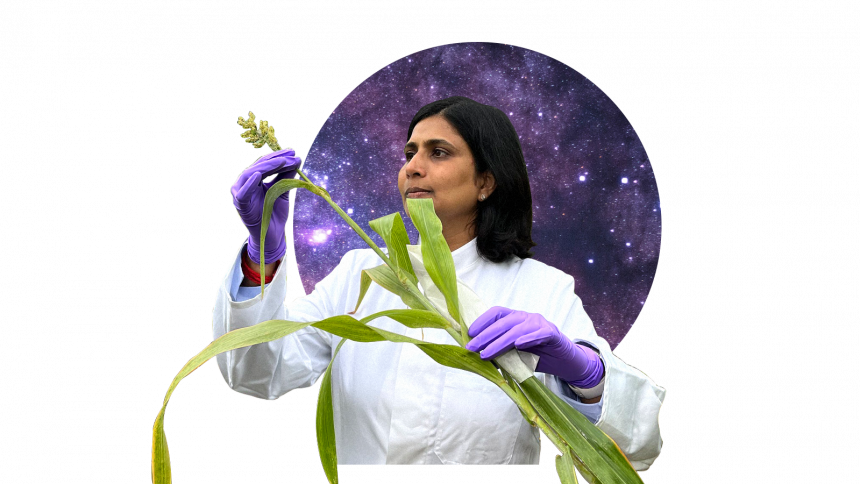In early April of last year, a white capsule the size of a small school bus detached from the International Space Station and splashed down off the coast of Tampa, Florida. This capsule carried 4,300 pounds of supplies and scientific experiments, including samples of dwarf tomatoes grown in space, crystals for semiconductors, and medical data on the astronauts in the station. Among these contents were over a million tiny orange seeds from a plant called arabidopsis, a member of the mustard family.
Pooja Mathur, a plant geneticist leading the Plant Breeding & Genetics Laboratory for the Joint FAO/IAEA Centre of Nuclear Techniques in Food and Agriculture in Seibersdorf, Austria, eagerly awaited the arrival of the seeds. The laboratory, a collaborative effort between the Food and Agriculture Organization and the International Atomic Energy Agency, has been studying nuclear technologies for over 60 years to breed new and resilient crop varieties. The seeds from the space capsule were their newest venture, having been exposed to cosmic radiation, extreme temperatures, and low gravity in orbit for nearly five months.
The cosmic crops project is the United Nations’ initial venture into space breeding, aiming to address the growing risks of food insecurity caused by climate change. With the effects of extreme weather already impacting agricultural production worldwide, the need for resilient crops is more pressing than ever.
The joint FAO/IAEA center’s project, known as Seeds in Space, marks the first international effort in space breeding, making the results of these experiments globally accessible. By understanding how plants adapt to stress in space environments, scientists hope to apply this knowledge to mitigate the effects of global warming on Earth.
The laboratory has experimented with mutagenesis by exposing plant material to gamma rays, significantly accelerating the process of mutation compared to conventional breeding methods. This approach has yielded over 3,400 new varieties of 210 plant species, benefiting farmers in more than 70 countries.
The Seeds in Space project involves studying the genetic changes in arabidopsis and sorghum seeds that spent time in space to determine if they exhibit beneficial traits for withstanding harsh conditions. Research efforts include DNA sequencing to understand the genetic changes at play and testing the plants for resilience to drought, salinity, and pest infestations.
As countries around the world face the challenges of climate change, the results of space breeding experiments like Seeds in Space could offer valuable insights into developing crops that can thrive in changing environmental conditions.






